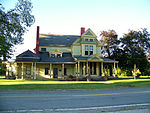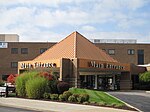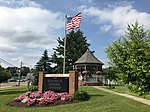Northeast Ohio Medical University
1973 establishments in OhioBuildings and structures in Portage County, OhioCleveland State UniversityEducation in Portage County, OhioKent State University ... and 7 more
Medical schools in OhioPharmacy schools in OhioPublic universities and colleges in OhioUniversities and colleges established in 1973University of AkronUse mdy dates from January 2021Youngstown State University
Northeast Ohio Medical University (NEOMED) is a public medical school in Rootstown, Ohio. It specializes in graduate education in medicine and pharmacy but also has a College of Graduate Studies. Its medical school has partnerships with four public universities (Akron, Cleveland State, Kent State, and Youngstown State) and one private college (Hiram). It also has 24 hospital partners, while the pharmacy school has over 100 pharmacy partners. The class size has grown to around 160 medical and 80 pharmacy students.
Excerpt from the Wikipedia article Northeast Ohio Medical University (License: CC BY-SA 3.0, Authors).Northeast Ohio Medical University
Loretta Drive,
Geographical coordinates (GPS) Address Website External links Nearby Places Show on map
Geographical coordinates (GPS)
| Latitude | Longitude |
|---|---|
| N 41.10293 ° | E -81.245366 ° |
Address
Northeast Ohio Medical University
Loretta Drive
44272
Ohio, United States
Open on Google Maps







